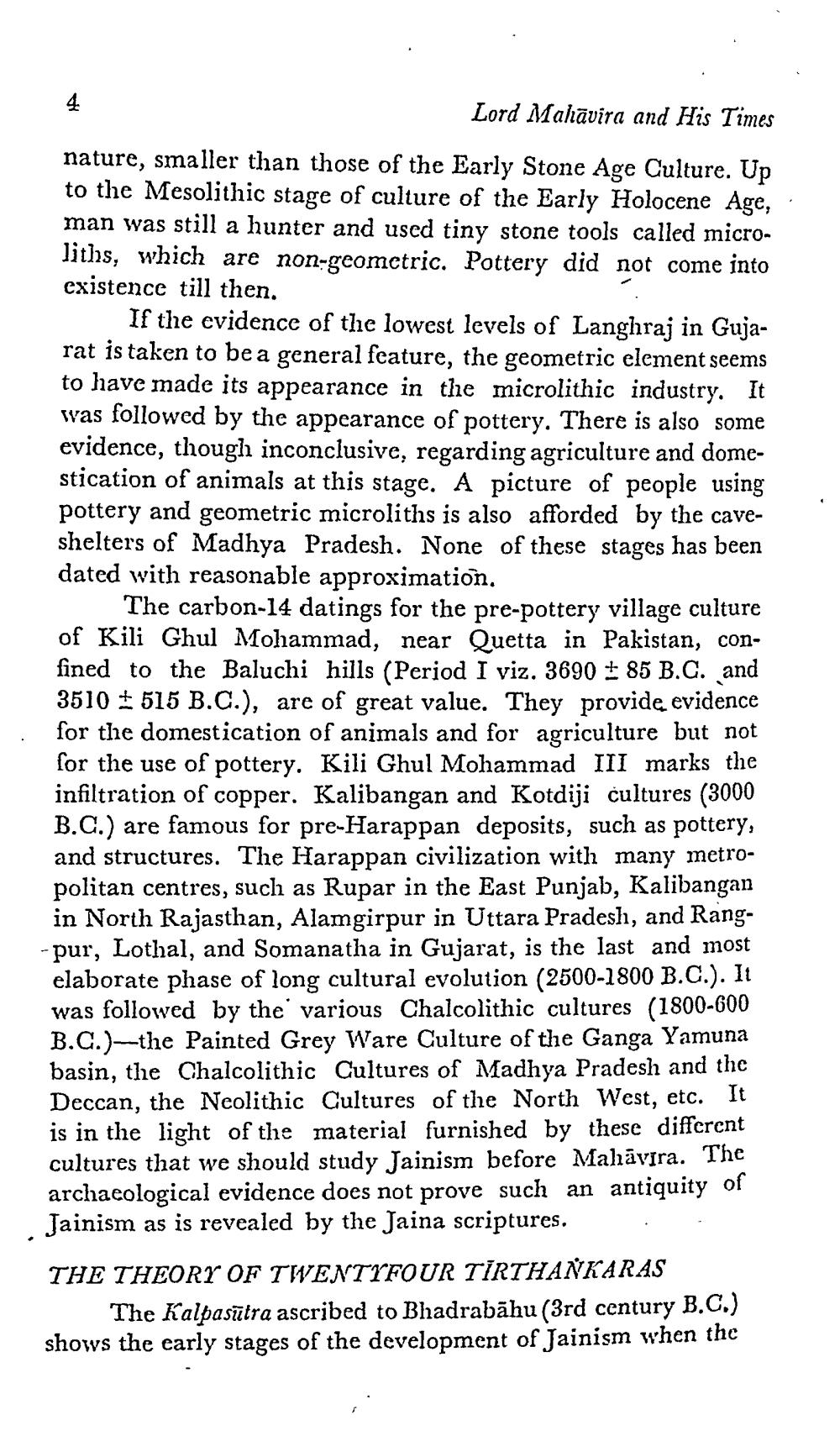________________
Lord Malāvira and His Times nature, smaller than those of the Early Stone Age Culture. Up to the Mesolithic stage of culture of the Early Holocene Age, man was still a hunter and used tiny stone tools called microliths, which are non-geometric. Pottery did not come into existence till then.
If the evidence of the lowest levels of Langhraj in Gujarat is taken to be a general feature, the geometric element seems to have made its appearance in the microlithic industry. It was followed by the appearance of pottery. There is also some evidence, though inconclusive, regarding agriculture and domestication of animals at this stage. A picture of people using pottery and geometric microliths is also afforded by the caveshelters of Madhya Pradesh. None of these stages has been dated with reasonable approximation.
The carbon-14 datings for the pre-pottery village culture of Kili Ghul Mohammad, near Quetta in Pakistan, confined to the Baluchi hills (Period I viz. 3690 + 85 B.C. and 3510 515 B.C.), are of great value. They provide evidence for the domestication of animals and for agriculture but not for the use of pottery. Kili Ghul Mohammad III marks the infiltration of copper. Kalibangan and Kotdiji cultures (3000 B.C.) are famous for pre-Harappan deposits, such as pottery, and structures. The Harappan civilization with many metropolitan centres, such as Rupar in the East Punjab, Kalibangan in North Rajasthan, Alamgirpur in Uttara Pradesh, and Rang-pur, Lothal, and Somanatha in Gujarat, is the last and most
elaborate phase of long cultural evolution (2500-1800 B.C.). It was followed by the various Chalcolithic cultures (1800-600 B.C.)--the Painted Grey Ware Culture of the Ganga Yamuna basin, the Chalcolithic Cultures of Madhya Pradesh and the Deccan, the Neolithic Cultures of the North West, etc. It is in the light of the material furnished by these different cultures that we should study Jainism before Mahāvīra. The archaeological evidence does not prove such an antiquity of Jainism as is revealed by the Jaina scriptures. THE THEORY OF TWENTYFOUR TIRTHANKARAS
The Kalpasūtra ascribed to Bhadrabāhu (3rd century B.C.) shows the early stages of the development of Jainism when the




